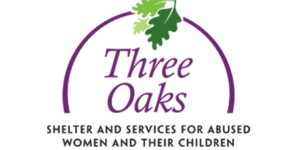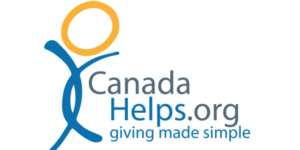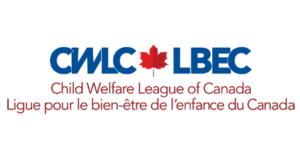Highland Shores Children’s Aid (HSCA) held its 4th Annual General Meeting on September 3, 2015. Members of the Society elected the Board of Directors who will help set the course for the agency for the coming year.
At the meeting, the following individuals were elected to the Board for three year terms:
Nominees from existing Board Members: Peter Knudsen, Phillip Peters and Elaine Philip
Nominee from new candidates: Anne-Marie Burrus
Returning members of the Board are: Michael McLeod, Jay Taugher, Marilyn Curson, Caitlin Dougherty, Donalda Simmons, David Slater and Alan Whyte.
Appointed Directors for the 2015/16 Board of Directors are as follows:
• Band Council of the Mohawks of the Bay of Quinte – appointee to be confirmed. This appointment is to fulfill the remaining portion of the 2014-2016 term.
• Alderville First Nation – Nora Sawyer will continue in her appointee role. Her term is for the period 2014-2016.
• Quinte Children’s Foundation – John Cairns was elected by the Quinte Children’s Foundation Board in an appointee role. His appointment is for the term 2015-2017.
Outgoing members of the Board, Jacqueline Pennington and Ray Dassylva were recognized by the Society for their service.
A special presentation of a Honourary Membership was given to Darcey French in recognition of his work on the Board, both as a member and as President.
In his Executive Director’s report provided at the meeting, Mark Kartusch outlined the accomplishments, changes and exciting initiatives that had taken place over the past year at the Society. One of those accomplishments was the finalization of a service framework for Highland Shores that will help guide staff in their work with children, youth and families. This service delivery model reflects the Society’s mission, vision and values and provides language and direction that describe how staff approach and perform their work on a consistent basis.
Over the past year the Society has been working on becoming a better community partner and has engaged in more service initiatives and planning in collaboration with its partners. The needs of families are often complex and no one agency can do it alone.
Commenting on the commitment staff of the Society have shown to ensuring youth in care have opportunities for post-secondary education, Kartusch said, “Our success depends on their hard work as well as the educational partnerships established with the Ontario government, the Crown Ward Education Championship Team and our foster families. As well, this success wouldn’t be possible without the support of the Quinte Children’s Foundation and the people in our communities who generously support the Foundation and help ensure these youth are able to take that next important step to post-secondary programs. We often talk about breaking the cycle for children and youth and education is one of the most effective ways of doing that.” At the May, 2015 Reach for Success youth awards, 69 young people in the care of the Society received bursaries in support of their post-secondary educational goals.
With regard to the changes the Society has faced over the past year Mr. Kartusch discussed the reduction in service volume experienced over the past six years, particularly in the number of children in care. As of March 31, 2015 there were 434 children in the care of Highland Shores Children’s Aid. That number compares to 490 children in care for the same period in the previous year.
The number of children coming into care has also been steadily dropping over the past six years and continues to decrease. Thirty-four fewer children came into the care of HSCA in fiscal 2014/15 than in the previous fiscal year.
This overall reduction in volume over the last year has also meant that the Society has had to be very careful in forecasting its staffing levels. Staffing reductions in the service area have been handled through attrition with some contract staff being hired to help buffer the unevenness in volume. The Society also continues to consolidate its internal processes. A review of both the Finance and Information Services departments led to some changes, including the reduction of a total of three positions within those areas.
The Society strongly believes that family-based care provides better outcomes for children and youth and wants to continue to reduce the number of children in group care over the next few years. As of March 31, 2015 48% of the children in the care of HSCA resided in family-based care. 38% lived independently. Only about 14% lived in group care.
Mr. Kartusch indicated that one change the Society is very concerned about and that is occurring in many jurisdictions in Ontario is the reduction in the number of foster families. As of March 31, 2015 the Society had approximately 163 foster homes. This compares to 189 foster homes as of the same period last year and that is down from over 200 in previous years. “In order to continue to provide children with family-based care we need additional foster parents. This is one of the key elements of our strategic plan, and along with strengthening our kin program, is crucial if we are to be successful in ensuring children remain in family-based care”, he emphasized.
Changes external to the Society are also taking place. When fully implemented, the provincial Child Protection Information Network (CPIN) will enable CASs to better serve children and families by improving information sharing and transparency. Over the past year, the Society continued to prepare for the advent of the network which has now been implemented at five CASs across Ontario with more on the way this year. CPIN implementation at Highland Shores will now likely take place in 2017.
In an effort to improve value for funding dollars, there is a focus on shared services across government including within the child welfare sector. Its promise lies in increasing capacity and ensuring as much of the public dollar ends up in services for children and families, as it should be.
The goal of increasing public transparency and accountability within the child welfare sector was moved forward in March of this year in partnership with the Ministry of Children and Youth Services when they publicly reported five provincial Performance Indicators (PIs) for Children’s Aid Societies which focused on safety, permanency and well-being. The goal of these indicators is to identify what has been accomplished in the field and to highlight areas where improvements will lead to a stronger system. Additional performance indicators will continue to be released in the future, however a link to the first five provincial PIs can be found on the HSCA website.
One of the biggest changes and challenges facing the Society is reducing its budget by $9.5 million from its 2013-2014 funding level. In order to deal with this reduction HSCA is taking action and with action, can come some excitement. A budget framework has been developed which provides planning parameters and a forecasted budget for each of the next five years.
One of the most important elements is how the Society has chosen to manage its budget. “We will simply get even better at our work. When we get better outcomes for our children and families, not only does that have the obvious and direct benefit of helping them, but it is often less expensive as well. Helping families more effectively and sooner, means that they can stand on their own without our help or without having to return for our help. This is where some excitement can come from rising to the challenge of being creative to get better outcomes, investing in innovative strategies and empowering our staff to come up with solutions for children and families that work. This is a much more invigorating approach rather than simply taking one of constraint and cuts”, he said.
The Society ended the year with a surplus, for the third year in a row. While this surplus must go back to the Ministry of Children and Youth Services, the Ministry maintains a Balanced Budget Fund which includes the surplus from HSCA from the past two years. If in a future year HSCA is facing a deficit as a result of a cut to its funding it can apply to access these funds.
In the coming year the Society will continue to work through its strategic operating plan, adapting as necessary to the unforeseen changes that will undoubtedly crop up. “There are changes we see coming, like CPIN, shared services and our need to continue our journey to being sustainable at a much lower funding level. And yes, there will be excitement. Excitement within the organization as we see the results of the hard work of our staff, excitement within the community as we continue to partner and play our part to both lead and follow and perhaps most important of all, the excitement of children and families as they find they have been helped through the difficulties they faced and can now look ahead to a brighter and more hopeful future”, he concluded.
An overview of the Society’s Lead Agency application under the Moving on Mental Health initiative of the Ministry of Children and Youth Services was also provided.
Following the Annual General Meeting the Highland Shores Children’s Aid Board of Directors appointed the Board Executive for 2015/16 as follows:
President: Michael McLeod
Vice President: Phillip Peters
Treasurer: Jay Taugher
Secretary: Elaine Philip
Additional members of the Executive Committee: Marilyn Curson and David Slater














